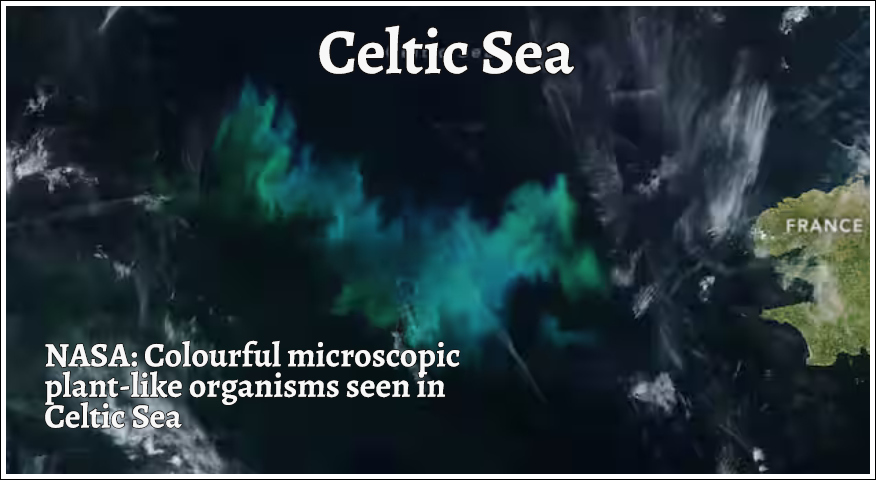bio tech
NASA: Bright, tiny, plant-like creatures discovered in the Celtic Sea
Published
1 month agoon

A remarkably colorful image of the Celtic Sea, a region of the North Atlantic Ocean renowned for its marine-rich ecosystems, was taken on May 10 by NASA’s Aqua satellite, which is a component of its Earth Observing System (EOS).
The picture displayed broad, colorful patterns extended across a sea of vivid blues and greens. The Celtic Sea is home to microscopic organisms that resemble plants, known as phytoplankton blooms, which may be the cause of the colors
The sight is just amazing, lighting up the skyline for hundreds of kilometers.
The Aqua satellite is equipped with multiple instruments that monitor different elements of Earth’s systems, including the atmosphere, seas, landmasses, and ice. It offers important information for comprehending weather patterns, climate change, and Earth’s water supplies.
The cause of this stunning show was phytoplankton bloom, a natural event brought on by rising temperatures and more sunlight. Using the MODIS instrument, satellites monitored the colorful event for more than a week.
vibrant picture of phytoplankton blooms
Small organisms that resemble plants called phytoplankton flourish close to the ocean’s surface. Additionally, they are primary producers, using photosynthesis to create organic matter from sunlight, carbon dioxide, and nutrients.
Many marine species, such as whales, shellfish, and small fish, rely on them as their main food supply. The marine food chain is based on them. The ecosystem as a whole is supported by it.
The northern seas—the North Sea, the Barents Sea, and the Celtic Sea—become ideal sites for these magnificent blooms as spring gives way to summer.
Early in the season, diatoms predominate and give the waters a green hue due to their silica shells and bodies rich in chlorophyll. The sea becomes a captivating turquoise-blue expanse when the temperature rises and the water becomes stratified, thanks to coccolithophores, which are ornamented with shiny calcium carbonate plates.
Read Also :-
These blooms’ distinctive color combination may be caused by a range of phytoplankton species or by colored dissolved organic materials in the nearby waters. Depending on its concentration, this organic debris can give the seawater colors ranging from green to yellow-green to brown.
You may like
-


Due to spacecraft glitches, astronaut Sunita Williams’ return from space was delayed.
-


Thunderstorms to hamper the potential for the Rohit Sharma-led team to make it to the T20 World Cup semifinals in Antigua, India vs. Bangladesh?
-


“Solver Gang” Is Accused of NEET Paper Leak; Police Arrest Ravi Atri, the Mastermind
-


When speaking about Sushant Singh Rajput, Sara Ali Khan fights back tears, saying, “Any Love I’ve Gotten for…”
-


Bigg Boss OTT 3 Launch : Armaan Malik and his wives join Anil Kapoor’s show
-


Second ODI between India and South Africa’s women: India will aim for an unstoppable advantage over South Africa

